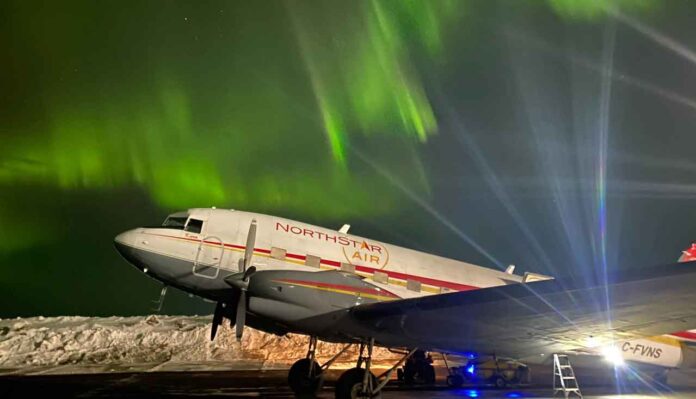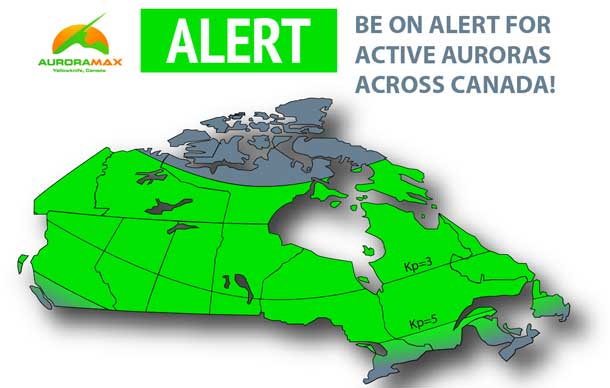October 3, 2024: Space Weather Forecast for the Next Two Days
THUNDER BAY – Over the next 48 hours, space weather activity is expected to intensify due to the effects of a Coronal Mass Ejection (CME) that departed the Sun on October 1. This CME is predicted to cause geomagnetic storms, potential solar radiation storms, and radio blackouts. Here’s a detailed forecast of what to expect and how it may impact Earth.
A. Geomagnetic Activity Forecast (Oct 3-5, 2024)
The NOAA Space Weather Prediction Center (SWPC) is forecasting increased geomagnetic activity over the next two days, with the potential for strong storms:
- October 3, 2024:
- Geomagnetic activity will be relatively mild throughout most of the day, with the Kp index peaking at 5.33 (Minor G1 storm) during the evening hours.
- Overnight into October 4, activity is expected to increase sharply due to the arrival of the CME, reaching Kp levels of 6.00 (Moderate G2 storm) by midnight UTC.
- October 4, 2024:
- A significant geomagnetic storm is predicted, with Kp levels reaching 7.00 (Strong G3 storm) during the late evening (21-00 UTC). This strong storm could result in auroras visible as far south as the northern United States.
- Earlier in the day, conditions will range from Kp 4.00 to 6.67, with fluctuating storm intensities.
- October 5, 2024:
- Geomagnetic activity will remain elevated, with Kp indices between 4.67 (Minor G1 storm) and 6.33 (Moderate G2 storm) through the early morning hours. Activity is expected to taper off slightly in the late afternoon.
Impact: Geomagnetic storms of this strength can cause disruptions to satellite operations, GPS navigation, and power grid systems, particularly at higher latitudes. In addition, auroras may be visible much farther south than usual, offering spectacular displays for skywatchers in regions like Canada, northern Europe, and the northern U.S.
B. Solar Radiation Activity Forecast (Oct 3-5, 2024)
- There is a 35% chance for minor solar radiation storms (S1 level) over the next three days, with a risk of elevated proton flux levels due to active regions on the Sun.
- While the chances of a major solar radiation storm remain low, astronauts and satellites in polar orbits could be affected by the increased radiation.
Impact: Minor solar radiation storms can pose risks to astronauts in space and high-altitude flights, particularly over polar regions. However, for most people on Earth, the effects will be negligible unless working in space or aviation sectors.
C. Radio Blackout Activity Forecast (Oct 3-5, 2024)
- Solar activity is expected to be moderate, with a 75% chance of radio blackouts reaching the R1-R2 levels (Minor-Moderate) each day.
- There is also a 35% chance of stronger R3-level radio blackouts due to the possibility of X-class solar flares from several active regions (ARs 3841, 3842, 3843, 3844, and 3848).
Impact: Radio blackouts can disrupt high-frequency (HF) communication, which is critical for aviation, maritime operations, and amateur radio operators. Stronger blackouts may also affect satellite communications and GPS accuracy, especially during and after solar flare events.
Summary of Space Weather Alerts (Oct 3-5, 2024)
- Geomagnetic Storms: Minor to strong (G1-G3) geomagnetic storms are likely, with the strongest activity occurring on the night of October 4, where auroras may be visible much farther south.
- Solar Radiation: A 35% chance of minor radiation storms (S1) is forecasted each day, with possible impacts on satellites and astronauts in polar orbits.
- Radio Blackouts: There is a 75% chance of moderate radio blackouts (R1-R2), and a 35% chance of strong blackouts (R3 or greater) due to potential X-class solar flares.
Wardrobe Recommendations for Auroras: For those in northern latitudes hoping to catch a glimpse of the auroras caused by the upcoming geomagnetic storms, bundle up! With fall temperatures dropping, make sure to wear a heavy jacket, gloves, and a hat, as clear skies and cold conditions are typical during aurora displays. The best times to see auroras will likely be during the night of October 4 into early October 5.







